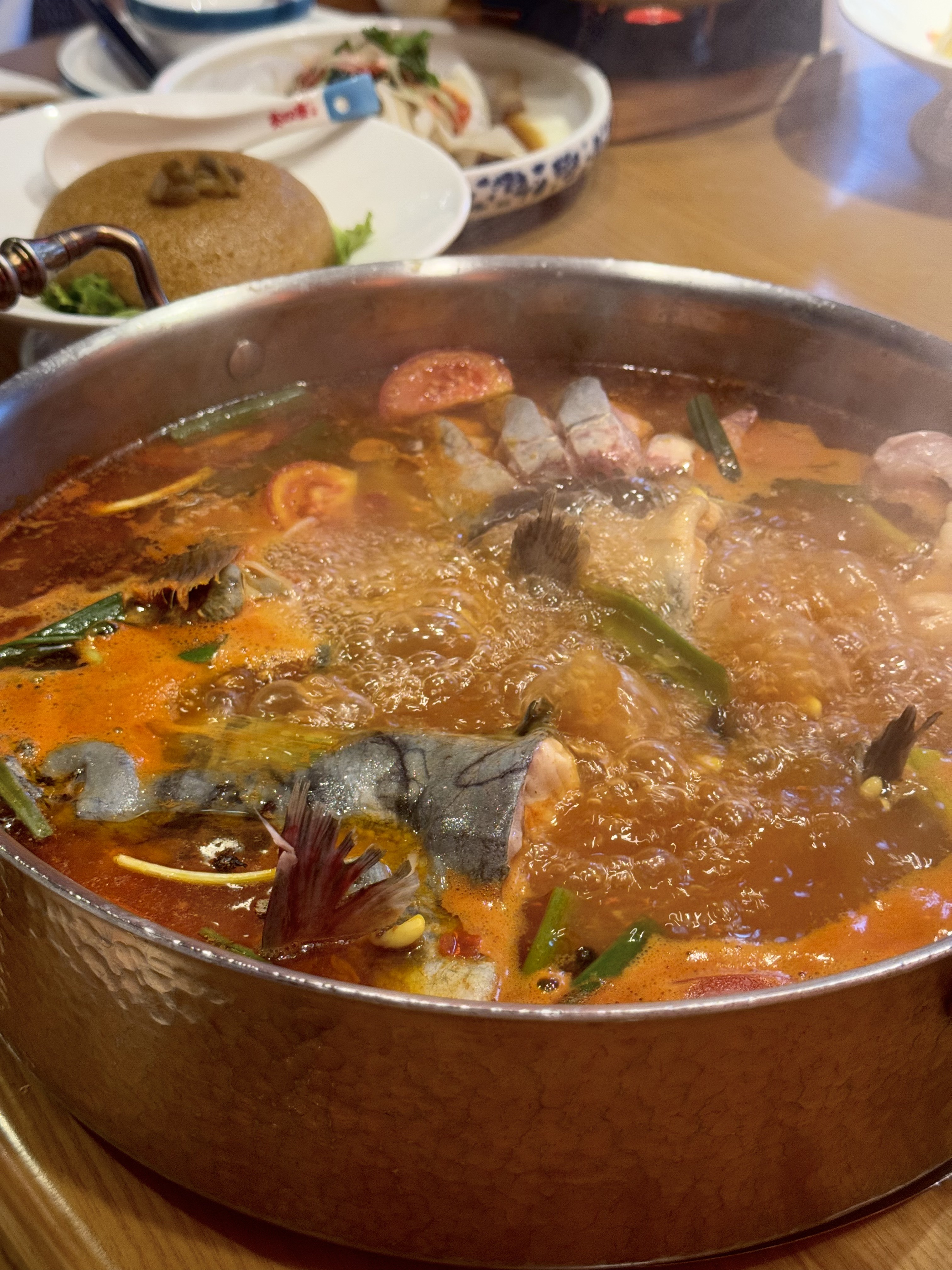I’m spending a week in Southwest China (Guiyang and Kunming), where the food is fiery spicy.

Fermented tomato sour soup fish.
One common theory claims that humid climates lead to pepper-heavy cuisine—but that doesn’t hold up. Take Guangzhou (my hometown) or the Jiangzhehu region (around Shanghai): both are hot and humid, yet our food is mild. (Humidity does encourage diverse spices, but that’s a different topic.)
Turns out that the southwest area (云贵川)’s pepper taste has an economic origin. Here’s the short version: During the Qing dynasty, the government tightly controlled salt production and distribution—right down to assigned supply routes. (Private salt trade was a felony by then, and this monopoly ensured tax revenue.)
The problem was that, the salt route to the Southwest was wildly inefficient. Officials sourced salt from the farthest possible producers and shipped it upstream along the Yangtze River, making it prohibitively expensive. So, people turned to peppercorns and chilies to add flavor instead.
The rest is history. But this story as a explain makes sense to me.